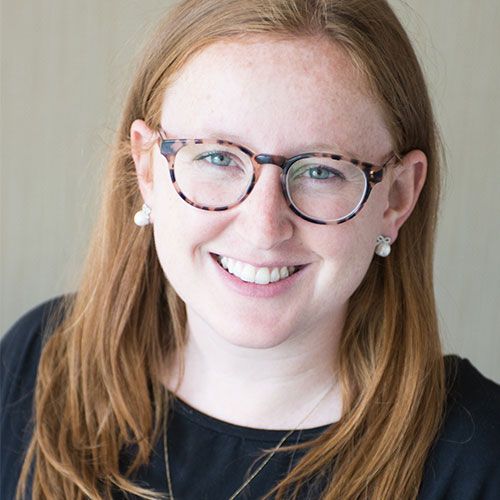Jewish communities have faced many conflicts throughout history, from Babylonian times through the Holocaust and beyond. When educators teach about these topics, they must decide how to frame their lessons, including how much time to dedicate to the stories of each side of the conflict.
And Dr. Alexandria Fanjoy Silver, a Jewish history teacher at the Anne and Max TanenbaumCHAT Community Hebrew Academy of Toronto, is at the forefront of upending how these conflicts are taught. Much of that is thanks to her experience participating in M²’s Senior Educators Cohort (SEC) — and particularly M²’s focus on values and conflict pedagogy — which she says, “revolutionized” her approach to teaching.
Teaching the Holocaust through the lens of the perpetrator
For decades, most Holocaust education and storytelling in the Jewish community has been focused on those caught in the tightening Nazi noose: who they were, what they did, and how some survived.
But Silver believes there should be a larger shift in the way educators approach many conflicts in Jewish history. Silver wants to start teaching about the Holocaust by focusing on a more contentious topic — the stories of the perpetrators, from the Nazis to willing participants in the occupied countries.
“I know this can be a controversial position,” said Silver. “But I argue that where the real lessons of the Holocaust lie are in the stories of those who chose to participate. Victims so often did not have agency, or the ability to choose their life path. If we believe in the goal of ‘Never Again,’ we need to take a closer look at the people who did this.”
Much like the famous Primo Levi quote, “Here, there is no why,” little attention was paid to “why” previously ordinary men engaged in wholesale mass murder, painting them in vague brushstrokes as just “evil people.” It’s a simplistic approach to say that all of the functionaries were inherently ‘willing executioners,’ explained Silver.
“The Nazi leadership who conceived of the Holocaust were absolutely evil. But they never could have implemented these plans without the thousands of people beneath them who carried out their orders,” she said. “These people were often not by definition evil people, but people who made a lot of horrible decisions.”
Making history relatable
“The stories of the perpetrators are especially relevant right now, when all this antisemitism is bubbling up and suddenly becoming acceptable again,” Silver said. She pointed out that right before World War II, low-level antisemitism was a completely acceptable worldview for communities across Europe.
Hitler, for example, rose to power on a strong business platform. There were many Germans who disagreed with his racial theories, but shrugged their shoulders and countered that he was ‘good for the economy.’
Across North America, many forms of anti-Jewish and antisemitic behavior are on the rise. In the last number of years, groups (protestors and otherwise) that co-opt the symbols of the Nazis are more common.
Studying the Holocaust from this perspective encourages students to dig deep into questions of citizenship, governance, and identifying and addressing hatred within the society. It forces students to ask questions: How did the perpetrators justify their actions? How did they dehumanize their victims? Researching and answering these questions can help students recognize issues like antisemitism or discrimination against Jews and other minorities today.
Getting kids interested in ancient conflicts
Using M²’s conflict pedagogy and value-based education, Silver also revamped the curriculum about ancient and medieval Jewish history.
“Sometimes, classics are a tough sell for the kids, because it’s hard to get them excited to talk about Babylon — and ancient and medieval curricula in general,” said Silver. So, she framed these ancient periods through value conflicts from the time period that are not unfamiliar to students today. Hellenism in ancient Israel, for example, is a relatable struggle between assimilation and separation, innovation and tradition.
The Maccabean Revolt can be understood as an urban vs. rural conflict. Framing these historical periods through archetypal value conflicts helped Silver’s ninth- and tenth-grade students stay engaged and create meaning. Creating these new, creative approaches to learning about history, with guidance from M², has resonated with students on a deeper and more personal level, she said.
“As the world becomes increasingly divided, education is one tool to ensure that students can identify, acknowledge, and take action against issues like antisemitism, polarization, and discrimination,” said Silver. “It’s so essential for our students to look at history and analyze the decisions people made, and compare those narratives to our lives today.”
______
Dr. Alexandria Fanjoy Silver is a Jewish history teacher at the Anne and Max TanenbaumCHAT Community Hebrew Academy of Toronto and a teacher at Camp Ramah in Canada. She participated in M²’s Senior Educators Cohort 3 and recently attended M²’s 18×18 summit. Watch Alexandria’s interview about her M² experience >
